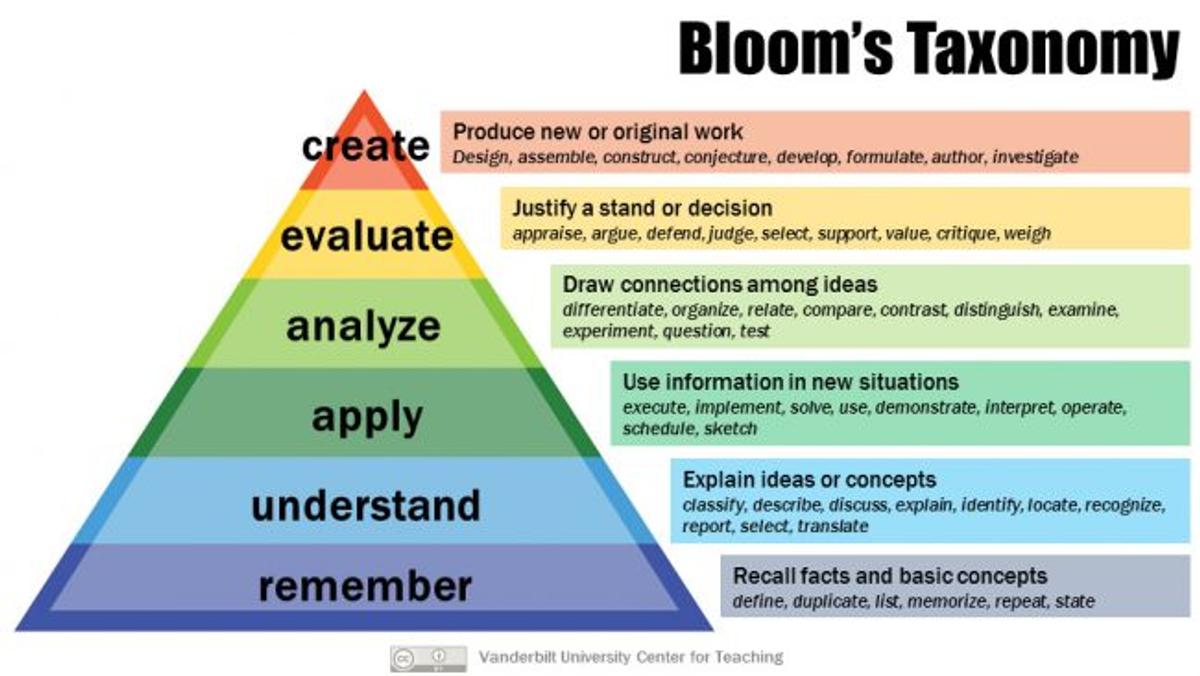HIGHER ORDER THINKING

Bloom's Taxonomy
“Bloom’s Taxonomy” is one of those terms that you may not necessarily be familiar with, however, it is very important. It is a combination of learning activities to help your child expand their critical thinking skills. Critical thinking skills allow a child to think independently, find and fix mistakes, solve problems, evaluate alternatives, and reflect on their own beliefs. These higher order thinking skills and mindset are not something that can be learned from reading a book or completing a worksheet. The emphasis is that these skills are developed through hands-on lessons that build beyond basic rote memorisation of facts.
Bloom's Taxonomy provides learning levels to increase higher order thinking skills for children of all ages. The levels include remember, understand, apply, analyse, evaluate, and create. The way a parent or teacher talks to a child, engaging them in learning, and activities that they provide for learning should have a basis on Bloom’s Taxonomy.
Remember & Understand
The Remember and Understand levels are where most teachers and parents typically ask questions of their children. This includes questions that involve who, what, where, when, and why.
Apply & Analyse
At the Apply and Analyse levels, as a parent, you can take a basic activity that would require a child to learn basic facts and then add a twist. For example, you can ask your child to do things like predict what will happen next in a story or to predict what would happen if you made a change to the story. They could also share if they had to write a sequel to a story, how would it begin? You can ask them to illustrate a maths word problem or draw a scene from their favourite part of a story they are reading.
Evaluate & Create
At the Evaluate and Create levels a child would be asked to debate, work in groups, write reflective summaries about literature, make decisions and challenge situations. Activities at home that would integrate these activities would be teaching your child how to build a model car or a robot from a kit, have them write and perform a skit based on a topic they are learning at school or, come up with their own creative project for their ERP.
If you would like further information about this, please let your classroom teacher know.

